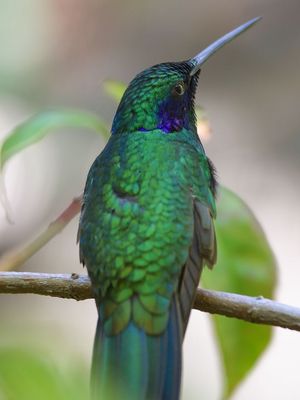South Carolina offers its guests an opportunity for a great getaway with beautiful pristine beaches, crystal clear lakes, mountains that reach forever and a bit of history. With so many different areas to offer, is it any wonder that South Carolina is a favorite of three species of hummingbirds. These three species of hummingbirds in South Carolina are the Ruby-throated Hummingbird, the Rufous Hummingbird and the Green Violet-ear Hummingbird.
Each species of hummingbirds that visit South Carolina, visits this state during different times of the year. The Ruby-throated Hummingbirds are most likely to be seen in the spring and summer months, arriving in early April and leaving in July. Rufous Hummingbirds prefer to visit South Carolina in the cooler months, so they are generally seen after the Ruby-throated Hummingbirds have left. Being able to identify each of these species will make it easier to decide when they are visiting an area. Identification of hummingbirds is done by determining which features of the species of hummingbirds are different from other species of hummingbirds, such as the color of the bird’s throat. This is usually easier to accomplish on the males of each species, as they are generally the more colorful of the sexes.
The Ruby-throated Hummingbird is one of the easiest of all species of hummingbirds to identify, especially the males. Simply look for the ruby-red feathers that cover the throat area of the hummingbird. Not only does this feature immediately give away the identity of this bird, it is also the feature that this species is named after. Unfortunately, the female Ruby-throated Hummingbird is not as easily identified, but it does have green feathers that cover its forehead, cap and run down its back. It also has a white breast and white-tipped tail. The Rufous Hummingbird is similar to the Ruby-throated Hummingbird in that the male of the species is the more colorful of the sexes. This hummingbird has an orange-red colored throat, a white breast, and its back is rufous, green or a combination of the two colors. The Rufous Hummingbird has one more thing in common with the Ruby-throated Hummingbird, the fact that it gets its name from a colored feature as well, and the amount of rufous that covers the bird’s body. On the male, this rufous color is found on the crown, tail and sides and on the female, the rufous color is found on its white-tipped tail. The female also has a green back and crown, white breast and streaked throat. The Green Violet-ear Hummingbird may be easier to identify than both the Ruby-throated Hummingbird and the Rufous Hummingbird because both sexes have the violet colored ear patch and they are predominately green in color, with blue on their throat and chest. This hummingbird also has a tail that has a black band close to the end of the tail and the tail is tipped with yellowish-green.
Attracting hummingbirds to a certain location is not that daunting a task either. Like identifying the hummingbird species, it only takes a little time and effort and the hummingbirds will become annual visitors. To welcome them to an area, a hummingbird feeder and / or a hummingbird garden can be used. This strictly depends on the person wishing to attract the hummingbirds to their piece of South Carolina.









